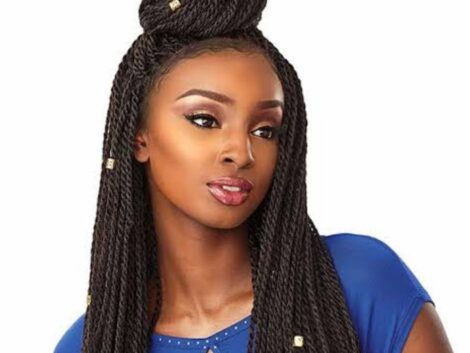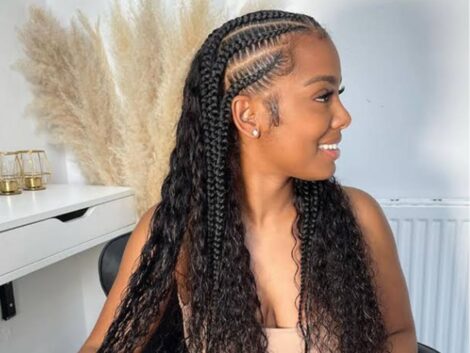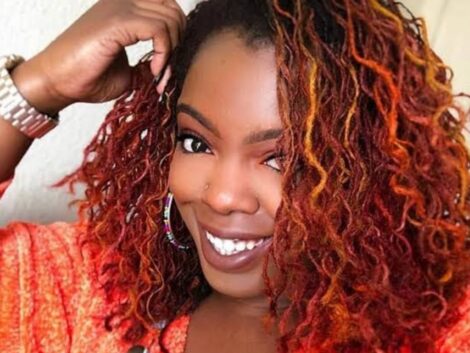A braid line, also known as a braided hairline or braided edge, is a popular hairstyle where small braids are created along the hairline or at the edges of the hair. This can be a unique and stylish touch to various hairstyles, such as updos, ponytails, or even when keeping the hair down. You can use this style for various occasions and purposes. A few situations when you might go for a braid line hairstyle are mentioned below:
Everyday Style
You can incorporate braids into your everyday style. It will provide you with a subtle yet stylish look while keeping your hair more manageable.
Special Events
At events like proms, parties, or weddings, a braid line can be a fantastic hairstyling option. This will add an elegant detail to the overall look.
Festival or Bohemian Look
At any music concert or similar sort of festival, creating a bohemian look is a popular choice, and a braid line can be a part of your bohemian look that will make you stand out.
Hair Accessories
Braid lines can also serve as a base for incorporating hair accessories. You can weave ribbons, flowers, or beads into the braids to further enhance your hairstyle and make it more festive or unique.
Workout Hairstyle
While engaging in physical activity or sport, a braid line can help you keep your hair away from your face and add a stylish touch as well.
These are a few occasions or situations where you can use braided lines.
Which Lace Is Better?
While choosing a hair lace, you should prioritize your preferences, needs, and the specific hairstyle or look you want. There are various kinds of hair laces, and they have their characteristics and benefits. Here are a few popular options:
Swiss Lace
Swiss lace is known for being very thin and delicate, providing a natural-looking hairline. It is lightweight and blends well with various skin tones. However, due to its thinness, it is usually less durable and requires extra care during application and removal.
French Lace
French lace is slightly thicker and more durable than Swiss lace. It offers a balance between durability and natural appearance. French lace can be a good choice if you’re looking for something that can withstand daily wear and tear.
HD (High Definition) Lace
HD lace is a newer type of lace that is thinner and more transparent than traditional laces. It provides an even more natural and undetectable look, as it can easily blend with the scalp. HD lace is popular for achieving flawless, “invisible” hairlines.
Transparent Lace
Transparent lace is similar to regular lace but has a lighter color suitable for a wider range of skin tones. It offers a more versatile option if you want to experiment with different hairstyles and hair colors.
It’s important to note that the quality of the lace itself can vary across brands and suppliers. It’s recommended to do thorough research, read reviews, and consider the recommendations of experienced hair professionals or stylists who can help guide you toward the best option for your specific needs.

How Much Is a Full Lace Braided Wig?
The price of a full lace braided wig can vary depending on various factors such as the brand, quality of the wig, length, density, and complexity of the braided style. Additionally, market trends and availability can also affect the price. Without specific details, it is challenging to provide an accurate price. However, full lace braided wigs generally range from around $100 to $500 or more. It is recommended to check with specific wig suppliers and online retailers or visit local beauty stores for more accurate pricing information based on your preferences and requirements.
When to braid hair?
Braiding is a very common hairstyle that comes in many varieties and has been used for multiple purposes for years. It is an easy way to look stylish, manage the hair properly, and reduce the chance of hair damage. If you are blessed with curly afro hair, then these few factors must be considered before braiding your hair:
Hair Condition
It is important to ensure that your hair is healthy before braiding. If your hair is damaged, dry, or weak, it is best to wait until it has been properly moisturized and strengthened. This will help minimize breakage and promote healthy hair growth.
Protective Styling
Braids are often chosen as a protective style to help minimize manipulation and reduce the risk of damage to the hair. Braiding can be a good option if you’re looking to protect your hair from daily styling and environmental factors. However, it’s important not to leave braids in for too long, as this can lead to matting, breakage, or damage to the hairline.
Seasonal Considerations
Some people prefer to braid their afro hair during certain seasons. For example, braids can be more convenient during hot and humid weather, as they can help keep the hair off the neck and reduce frizz caused by sweat. On the other hand, some individuals may prefer to braid their hair during colder months to protect it from the harsh weather effects.
Hair Growth Goals
Braiding can be a helpful technique if you’re trying to grow your hair. Braids can provide a protective environment for the hair, reducing the likelihood of breakage and promoting length retention. However, it’s important not to keep braids in for too long to avoid tension on the scalp and potential damage.
Ultimately, the decision of when to braid hair is personal, based on your hair’s needs and your desired style. It’s a good idea to consult with a hairstylist or professional who can assess your hair’s condition and provide guidance tailored to your specific situation.
How often to change the braided line?
The frequency of changing your braided hairline can vary depending on several factors, including the type of braids, hair texture, and personal preferences. Here are some general guidelines:
New Growth
As your hair grows, the new hair near the roots will start showing, making the braids look less neat. This is typically the most common reason for changing braided hairstyles. For most people, new growth becomes noticeable after a few weeks, around 4 to 8 weeks.
Hair Health
Braiding your hair puts tension on the strands, and leaving braids in for too long can lead to hair breakage and damage. Listening to your hair and giving it a break is important to avoid potential issues. If you notice excessive hair breakage, thinning, or scalp discomfort, it’s time to remove the braids.
Hairstyle Maintenance
Some braided styles, such as box braids or cornrows, may be more durable and can last longer without major changes. On the other hand, delicate braids or styles with added extensions may require more frequent changes to maintain their appearance.
Personal Preference
Ultimately, how often you change your braided hairline is up to your personal preference. Some individuals frequently change their hairstyles for variety, while others prefer to keep a style for an extended period.
It’s essential to balance keeping your braids long enough to protect your hair and scalp and avoiding potential damage from leaving them in for too long. Remember to care for your hair and scalp while wearing braids by moisturizing regularly, avoiding excessive tension, and gently cleansing your scalp. Consult a professional hairstylist who can provide personalized advice based on your hair type and condition.
Should I Interlock My Hair?
Deciding whether or not to interlock your hair is a personal choice that depends on your individual preferences and hair type. This method is commonly used to maintain and style locked or tightly coiled hair. It involves using a tool (such as a latch hook) to pull sections of hair through themselves, creating knots that help to encourage the formation of locks.
Here are a few factors to consider when deciding whether or not to interlock your hair:
Hair Type
Interlocking is generally more suitable for hair types that naturally form tight coils or have a coarse texture. If your hair type is more straight or loosely curled, interlocking may not be the most effective method for achieving the desired results.
Hairstyle Goals
Interlocking can be a great option if you want to promote and maintain the formation of locks or if you prefer a hairstyle with a neat and uniform appearance. However, there might be better choices than interlocking if you’re aiming for a different hairstyle, such as loose natural curls or a more free-flowing look.
Maintenance and Commitment
Interlocking requires regular maintenance to keep your locks tidy and prevent matting or unraveling. Consider whether you are willing to commit to the upkeep and maintenance required for interlocked hair.
Professional Assistance
It is generally recommended to seek the assistance of a professional loctician or stylist experienced in interlocking if you need clarification on the process or want to achieve the best results. They can provide guidance tailored to your specific hair type and desired style.
Ultimately, the decision to interlock your hair should be based on your personal preferences, the characteristics of your hair, and your desired hairstyle. Consult with a stylist who specializes in interlocking or explore different methods of maintaining and styling your hair to find the approach that suits you best.
Lastly, check out the mane caper shop.




